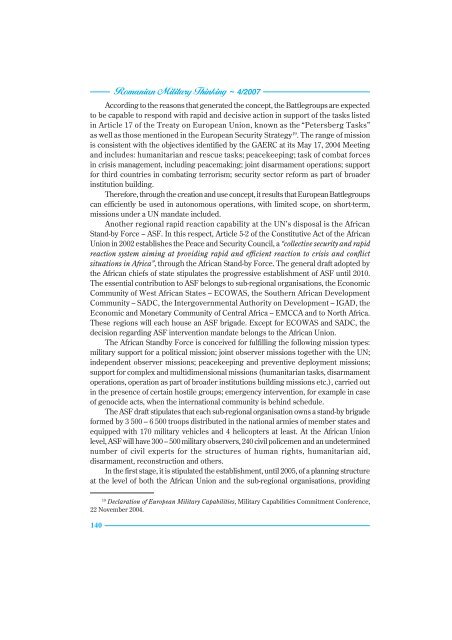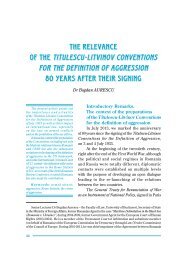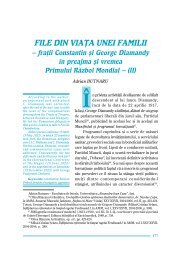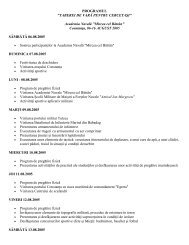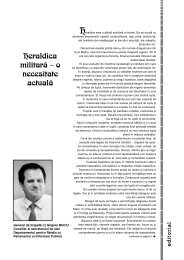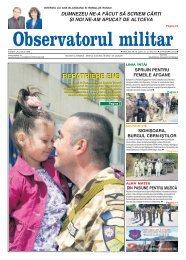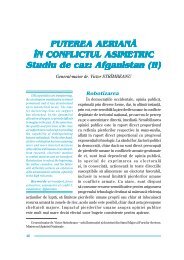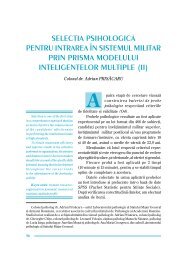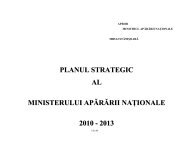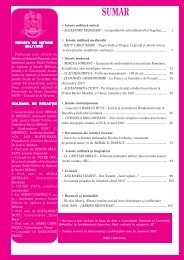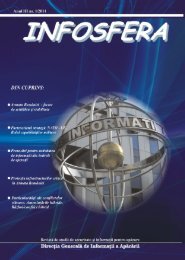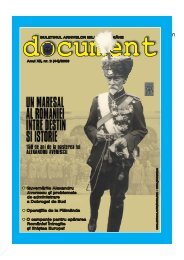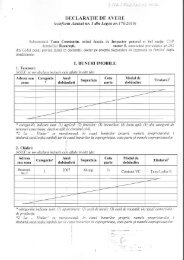Romanian Military Thinking
Romanian Military Thinking
Romanian Military Thinking
Create successful ePaper yourself
Turn your PDF publications into a flip-book with our unique Google optimized e-Paper software.
140<br />
<strong>Romanian</strong> <strong>Military</strong> <strong>Thinking</strong> ~ 4/2007<br />
According to the reasons that generated the concept, the Battlegroups are expected<br />
to be capable to respond with rapid and decisive action in support of the tasks listed<br />
in Article 17 of the Treaty on European Union, known as the “Petersberg Tasks”<br />
as well as those mentioned in the European Security Strategy 19 . The range of mission<br />
is consistent with the objectives identified by the GAERC at its May 17, 2004 Meeting<br />
and includes: humanitarian and rescue tasks; peacekeeping; task of combat forces<br />
in crisis management, including peacemaking; joint disarmament operations; support<br />
for third countries in combating terrorism; security sector reform as part of broader<br />
institution building.<br />
Therefore, through the creation and use concept, it results that European Battlegroups<br />
can efficiently be used in autonomous operations, with limited scope, on short-term,<br />
missions under a UN mandate included.<br />
Another regional rapid reaction capability at the UN’s disposal is the African<br />
Stand-by Force – ASF. In this respect, Article 5-2 of the Constitutive Act of the African<br />
Union in 2002 establishes the Peace and Security Council, a “collective security and rapid<br />
reaction system aiming at providing rapid and efficient reaction to crisis and conflict<br />
situations in Africa”, through the African Stand-by Force. The general draft adopted by<br />
the African chiefs of state stipulates the progressive establishment of ASF until 2010.<br />
The essential contribution to ASF belongs to sub-regional organisations, the Economic<br />
Community of West African States – ECOWAS, the Southern African Development<br />
Community – SADC, the Intergovernmental Authority on Development – IGAD, the<br />
Economic and Monetary Community of Central Africa – EMCCA and to North Africa.<br />
These regions will each house an ASF brigade. Except for ECOWAS and SADC, the<br />
decision regarding ASF intervention mandate belongs to the African Union.<br />
The African Standby Force is conceived for fulfilling the following mission types:<br />
military support for a political mission; joint observer missions together with the UN;<br />
independent observer missions; peacekeeping and preventive deployment missions;<br />
support for complex and multidimensional missions (humanitarian tasks, disarmament<br />
operations, operation as part of broader institutions building missions etc.), carried out<br />
in the presence of certain hostile groups; emergency intervention, for example in case<br />
of genocide acts, when the international community is behind schedule.<br />
The ASF draft stipulates that each sub-regional organisation owns a stand-by brigade<br />
formed by 3 500 – 6 500 troops distributed in the national armies of member states and<br />
equipped with 170 military vehicles and 4 helicopters at least. At the African Union<br />
level, ASF will have 300 – 500 military observers, 240 civil policemen and an undetermined<br />
number of civil experts for the structures of human rights, humanitarian aid,<br />
disarmament, reconstruction and others.<br />
In the first stage, it is stipulated the establishment, until 2005, of a planning structure<br />
at the level of both the African Union and the sub-regional organisations, providing<br />
19 Declaration of European <strong>Military</strong> Capabilities, <strong>Military</strong> Capabilities Commitment Conference,<br />
22 November 2004.


